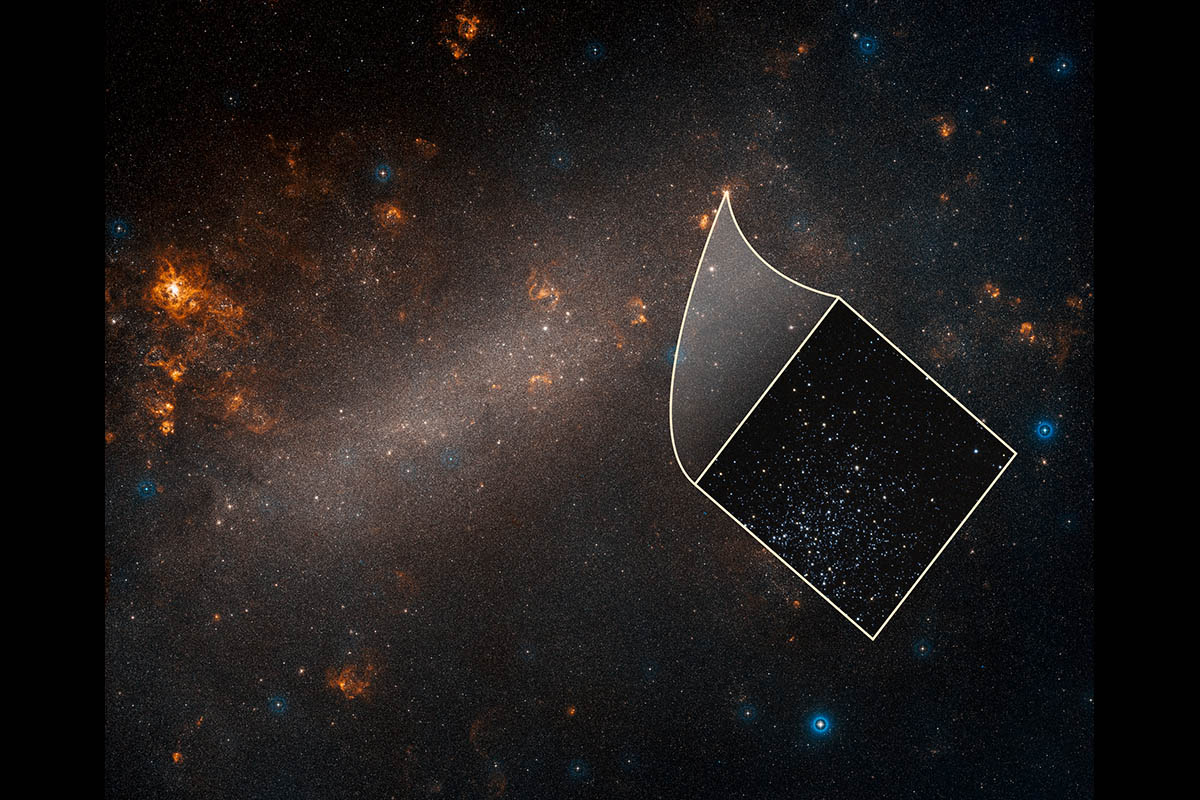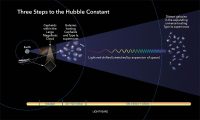This is a ground-based telescope’s view of the Large Magellanic Cloud, a satellite galaxy of our Milky Way. The inset image, taken by the Hubble Space Telescope, reveals one of many star clusters scattered throughout the dwarf galaxy. The cluster members include a special class of pulsating star called a Cepheid variable, which brightens and dims at a predictable rate that corresponds to its intrinsic brightness. (NASA, ESA, A. Riess (STScI/JHU) and Palomar Digitized Sky Survey)
Home This is a ground-based telescope’s view of the Large Magellanic Cloud, a satellite galaxy of our Milky Way. The inset image, taken by the Hubble Space Telescope, reveals one of many star clusters scattered throughout the dwarf galaxy. The cluster members include a special class of pulsating star called a Cepheid variable, which brightens and dims at a predictable rate that corresponds to its intrinsic brightness. (NASA, ESA, A. Riess (STScI/JHU) and Palomar Digitized Sky Survey) This is a ground-based telescope's view of the Large Magellanic Cloud, a satellite galaxy of our Milky Way. The inset image, taken by the Hubble Space Telescope, reveals one of many star clusters scattered throughout the dwarf galaxy. The cluster members include a special class of pulsating star called a Cepheid variable, which brightens and dims at a predictable rate that corresponds to its intrinsic brightness. (NASA, ESA, A. Riess (STScI/JHU) and Palomar Digitized Sky Survey)
This is a ground-based telescope’s view of the Large Magellanic Cloud, a satellite galaxy of our Milky Way. The inset image, taken by the Hubble Space Telescope, reveals one of many star clusters scattered throughout the dwarf galaxy. The cluster members include a special class of pulsating star called a Cepheid variable, which brightens and dims at a predictable rate that corresponds to its intrinsic brightness. (NASA, ESA, A. Riess (STScI/JHU) and Palomar Digitized Sky Survey)



